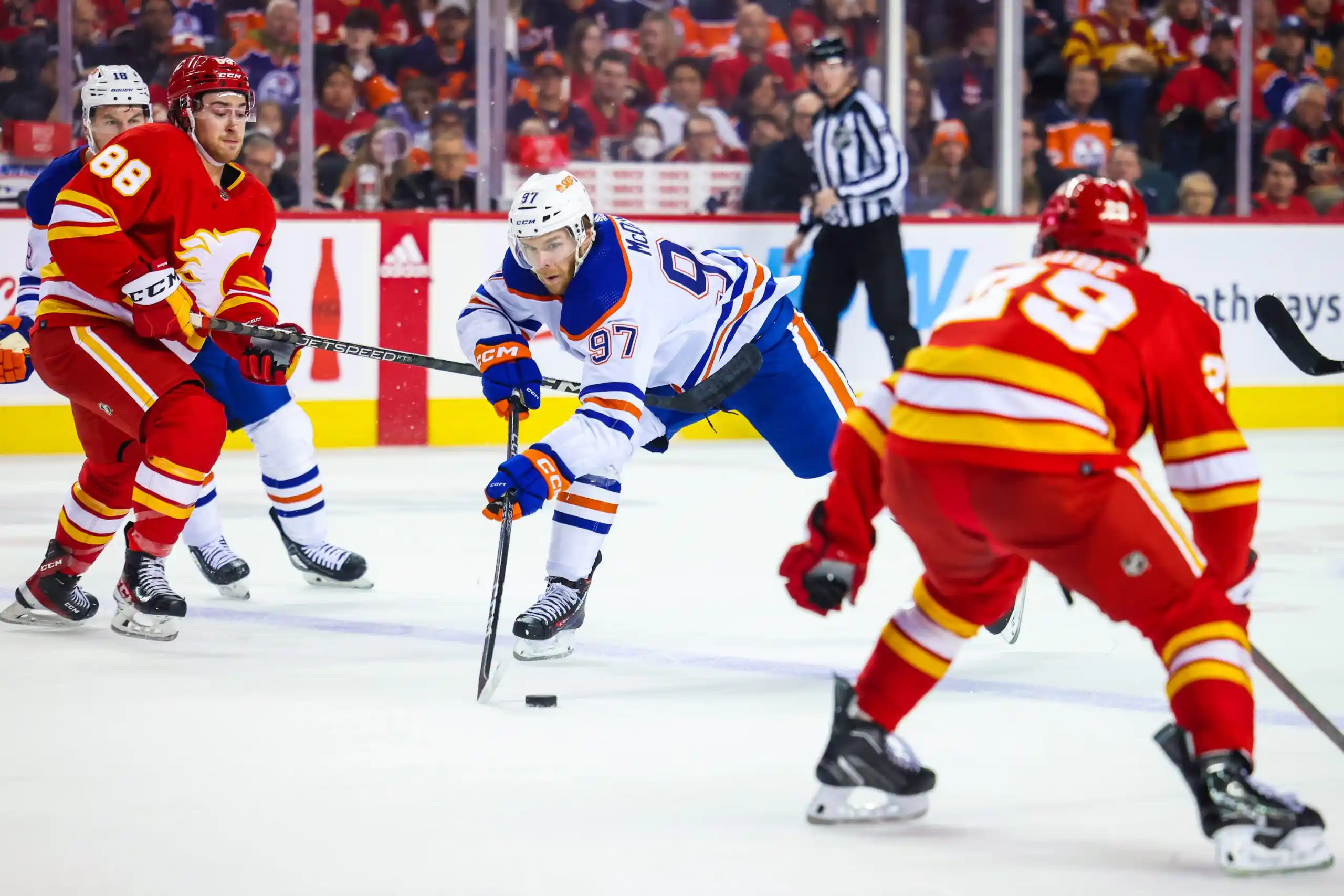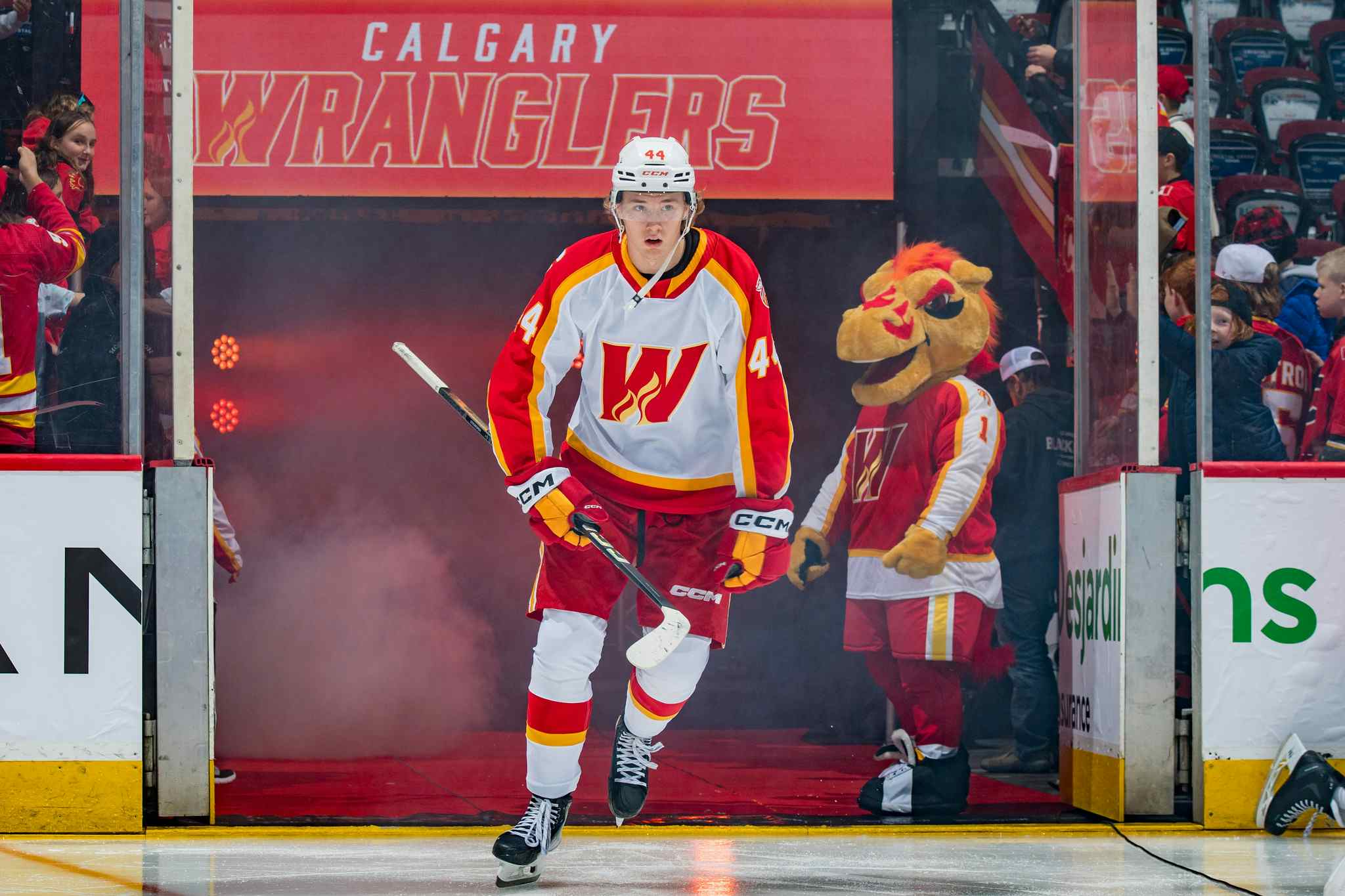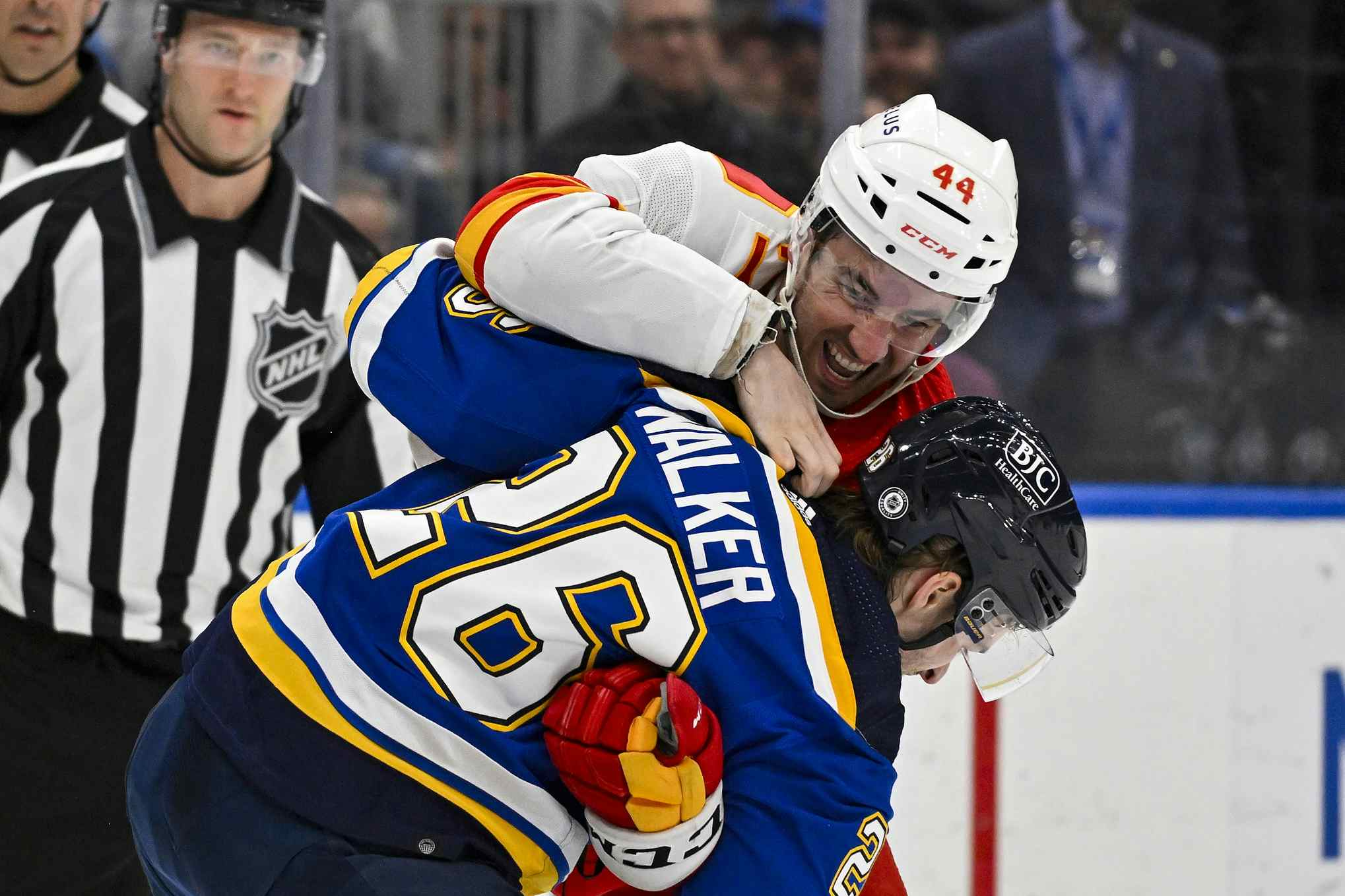Looking at Flames zone entries through 43 games
By Ryan Pike
8 years agoOne of the things we’ve been looking at as an analytical tool over the past couple seasons here at FlamesNation is offensive zone entries. I’ve finally gotten caught up on tabulating data for the first half of the season – the first 43 games, in fact – and we figured now is about as good a time as any for a check-in on how the data looks, what trends have emerged, and how things have changed since our look at the numbers 19 games into the season.
A QUICK RUNDOWN
Some quick definitions:
- Offensive Zone Entry: The act of intentionally bringing the puck
into the offensive zone, traditionally for the purposes of attempting to
score a goal, but not exclusively. (Sometimes you just want to eat up
the clock a bit or give your team a chance to do a line change.) - Carry-In: A zone entry where a player has the puck on his stick and enters the zone in a controlled manner.
- Dump-and-Change: A zone entry where a player throws the puck deep into the offensive zone without a player in pursuit of it, with the purpose of the dump-in as buying time for a line change.
- Dump-and-Chase: A zone entry where a player throws the puck deep
with one or more players in pursuit of the puck, with the purpose of
regaining possession deep in the offensive zone. (Often used to get
pucks past big defenders, with an aim towards getting them skating a lot
and tiring them out.) - Missed Entry: A zone entry where the puck goes into the zone
because of something a Flames player attempted that went awry, but the
puck still went in without an icing or off-sides. (As in, a T.J. Brodie
stretch pass that goes off somebody’s skate and goes cleanly into the
offensive zone.) - Pass-In Entry: A zone entry where the puck goes across the
blueline into the offensive zone in an uncontrolled manner, but because
it’s being passed to a player (who collects the puck). - Tip-Dump: The cousin of the dump-and-chase, except involving less
puck control. A player uses their stick to tip the puck into the
offensive end, typically off a knee-high hard pass from a defenseman in
the defensive zone.
With the formalities out of the way, let’s dig in.
FORWARDS
Carry% = percentage of entries that are carry-ins
CF% = Corsi For percentage
OZS% = Offensive Zone Start percentage
All the data is all situations and includes power-play and penalty kill figures, too.
CF% = Corsi For percentage
OZS% = Offensive Zone Start percentage
All the data is all situations and includes power-play and penalty kill figures, too.
| Player | Carry% (43) | Carry% (19) | CF% (43) | OZS% (43) |
| Gaudreau | 72.67% | 71.60% | 57.5% | 70.6% |
| Backlund | 60.41% | 57.94% | 50.3% | 42.7% |
| Monahan | 58.52% | 61.83% | 52.8% | 65.0% |
| Bennett | 55.25% | 53.85% | 53.1% | 60.5% |
| Colborne | 54.81% | 50.00% | 50.2% | 48.8% |
| Stajan | 46.57% | 42.17% | 40.9% | 27.3% |
| Ferland | 43.78% | 38.00% | 54.4% | 49.0% |
| Raymond | 43.08% | 41.82% | 51.5% | 57.9% |
| Frolik | 40.32% | 38.02% | 47.0% | 40.3% |
| Hudler | 40.20% | 39.34% | 56.3% | 70.4% |
| Jooris | 38.10% | 43.75% | 45.0% | 41.2% |
| Granlund | 37.93% | 0.00% | 43.0% | 62.8% |
| Jones | 37.17% | 36.89% | 44.8% | 41.6% |
| Bollig | 36.36% | 36.73% | 44.7% | 35.5% |
| Grant | 33.33% | 33.33% | 42.6% | 34.9% |
| Bouma | 31.11% | 31.25% | 40.5% | 30.9% |
Okay, so this tells us that the guys that drive play into the offensive zone are predominantly Johnny Gaudreau, Mikael Backlund, Sean Monahan, Sam Bennett and Joe Colborne. Colborne’s a bit of a surprise because he hasn’t been able to bury chances very often, but he does get the puck into the offensive zone with great frequency. It’s also not overly surprising to see Matt Stajan emerge as the best of the rest, as he’s a pretty effective two-way player.
Improving greatly since 19 games in? Colborne, Stajan and Micheal Ferland. Sliding back a bit? Monahan and Josh Jooris.
General trend that is definitely not showing up in the data? The proportion of offensive or defensive zone starts has nothing to do with their carry-in rate. Examples: Hudler and Granlund get tons of offensive starts and have low carry-in rates, while Backlund starts mostly in the defensive end and carries the puck in frequently.
DEFENSE
| Player | Carry% (43) | Carry% (19) | CF% (43) | OZS% (43) |
| Brodie | 38.97% | 35.59% | 50.4% | 47.5% |
| Hamilton | 32.95% | 31.71% | 52.5% | 54.0% |
| Wideman | 26.45% | 24.69% | 49.6% | 60.3% |
| Giordano | 20.56% | 20.35% | 52.2% | 50.2% |
| Kulak | 18.18% | 18.18% | 54.3% | 46.3% |
| Engelland | 16.88% | 14.29% | 43.8% | 45.6% |
| Russell | 15.92% | 19.59% | 44.0% | 49.3% |
| Smid | 4.17% | 0.00% | 46.1% | 48.3% |
None of these findings are shocking, not really. Carrying it in more? Brodie. Carrying it in less? Russell. Everybody else is basically the same. Giordano and Russell do see their numbers dragged down a bit by playing on the penalty kill, but yeesh, Russell’s figures are pretty rough. On the other hand? Brodie and Hamilton are pretty darn good.
RAW LEADERS
- Total Entries: Gaudreau 344, Monahan 270, Bennett 257, Backlund 245, Colborne 239
- Carry-Ins: Gaudreau 250, Monahan 158, Backlund 148, Bennett 142, Colborne 131
- Dump-Ins: Russell 96, Giordano 93, Hamilton 81, Wideman 69, Monahan 66
- Missed: Brodie 29, Giordano 26, Hamilton 25, Wideman 23, Gaudreau 16
- Tip-Ins: Jones 50, Hudler 38, Stajan 32, Colborne 30, Ferland 27
TAKE-AWAYS
It’s a stretch to conclude definitively that carrying the puck in leads to offense. Dumping and chasing, with strong puck retrieval, can lead to offense, too. But carrying in the puck maintains puck possession, and puck possession leads to offense more frequently than dumping it in. And when you consider that the players on the Flames that drive the team’s offense are the ones carrying the puck in all the time, maybe the Flames should try holding onto the puck more than they have been.
Recent articles from Ryan Pike





